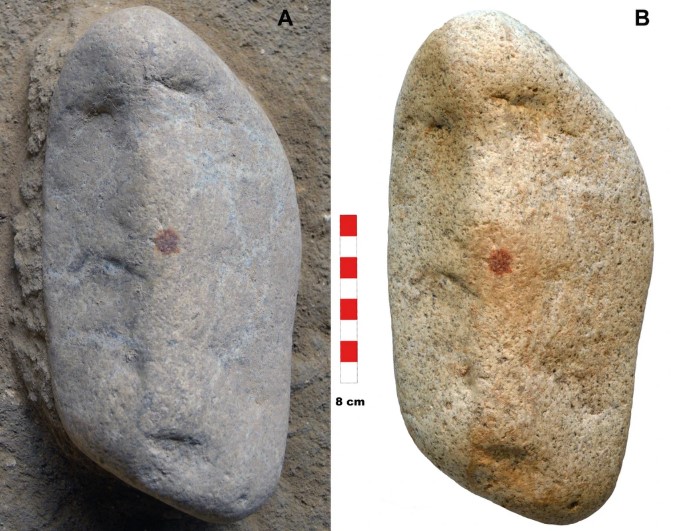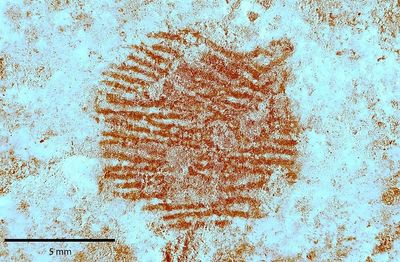The most complete Neanderthal fingerprint ever discovered may have been left behind by a prehistoric artist while painting a face on a pebble using red ocher. Found at the San Lázaro rock shelter in central Spain, the rouge dactylogram provides new evidence for the cognitive abilities of Neanderthals, implying that they shared our tendency to see faces in inanimate objects – a phenomenon known as pareidolia.
“This object contributes to our understanding of Neanderthals’ capacity for abstraction, suggesting that it could represent one of the earliest human facial symbolizations in Prehistory,” write the authors of a new study about the stained pebble. Retrieved from a layer of sediment dated to around 43,000 years ago, the stone is associated with an assemblage of Neanderthal tools and was deposited long before modern humans reached this part of the Iberian peninsula.
And while a partial Neanderthal fingerprint was previously found in ancient resin at a site in Königsaue, Germany, the newly discovered artifact stands out for its completeness as well as the fact that it appears to have been made deliberately. “The ocher dot does not appear as a shapeless addition or a mere stain,” write the researchers. “Rather, it contains a fingerprint that implies the pigment has been applied specifically with the tip of a finger soaked in pigment.”
Analyzing the pebble, the study authors determine that it was brought to the rock shelter from the nearby Eresma river. Importantly, the stone shows no signs of having been used as a tool, suggesting that it was seen as a non-utilitarian item with symbolic rather than functional value.
Noting how the finger-painted red dot combines with a series of natural depressions in the pebble to form an image, the researchers say that the object “could resemble a human face, with eyes, a mouth, and a ridge shaped like a nose.”

“This pebble could thus represent one of the oldest known abstractions of a human face in the prehistoric record, according to the hypothesis of Face Pareidolia,” they write.
In general, pareidolia refers to a psychological process whereby the human mind is naturally primed to identify familiar patterns in everyday objects. The more specific phenomenon of face pareidolia, meanwhile, concerns our tendency to recognize faces any time we see a couple of blobs or lines arranged like eyes and a mouth.
Pondering their finger-painted Spanish pebble, the study authors muse: “Does the piece under study correspond to the phenomenon of Face Pareidolia? Is it a representation of a face? There are grounds to suspect so.”
Thus, while they stop short of making any definitive claims about the nature of the red dot or the intentions of its prehistoric creator, the researchers conclude that, based on their findings, “we cannot exclude the possibility that both Homo sapiens and Homo neanderthalensis possessed similar capacities for interpreting Face Pareidolia.”
The study is published in the journal Archaeological and Anthropological Sciences.





